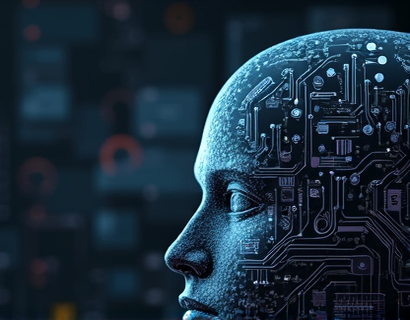Transforming Access to Social Services Information with AI-Powered Chat Interfaces
In an era where information is abundant yet often overwhelming, the need for a reliable and educational resource for specialized social services information has become paramount. This article explores the transformative potential of an AI-powered chat interface designed to provide verified and specialized information on social services, ensuring a safe and educational experience for all users, from adults to students and young learners. The focus is on creating an intuitive platform that simplifies access to essential resources, empowering users to make informed decisions and fostering a deeper understanding of social services.
The Importance of Specialized Social Services Information
Social services play a crucial role in supporting individuals and communities, offering a range of services from mental health support to housing assistance and educational programs. However, navigating these services can be complex and daunting, especially for those who are not familiar with the system. The information available online is vast and varied, often making it difficult to discern credible sources from unreliable ones. This is where an AI-powered chat interface can make a significant difference by providing accurate, verified, and specialized content tailored to the needs of different user groups.
How AI Chat Interfaces Enhance User Experience
An AI-powered chat interface offers a unique blend of technology and human-like interaction, making it an ideal tool for delivering specialized information on social services. This interface uses advanced natural language processing (NLP) and machine learning algorithms to understand user queries and provide relevant, context-specific responses. The chat interface is designed to be intuitive and user-friendly, allowing users to engage in a conversational manner, asking questions and receiving detailed answers without the need for technical expertise.
The AI's ability to learn and adapt based on user interactions ensures that the information provided becomes more accurate and personalized over time. This dynamic approach not only enhances the user experience but also builds trust, as users can rely on the chat interface to deliver up-to-date and reliable information. For individuals seeking information on social services, this means having a consistent and dependable resource at their fingertips.
Ensuring Safety and Educational Value
One of the primary concerns when providing information on social services is ensuring the safety and well-being of users, particularly children and young learners. The AI chat interface addresses this by incorporating robust safety features and content verification processes. All information provided is rigorously checked for accuracy and relevance, and the chat interface is designed to filter out any potentially harmful or inappropriate content.
For younger users, a child-friendly version of the chat interface can be activated, simplifying language and focusing on age-appropriate topics. This ensures that children and students can access the information they need in a safe and understandable manner. The educational aspect is further enhanced by including resources and links to additional reading materials, helping users gain a deeper understanding of social services and related issues.
Empowering Informed Decision-Making
The ultimate goal of the AI-powered chat interface is to empower users to make informed decisions regarding social services. By providing detailed and verified information, the chat interface helps users understand their options, the services available to them, and the steps required to access these services. This is particularly beneficial for individuals who may be new to the social services system or those who are navigating complex situations such as seeking housing assistance, mental health support, or educational programs.
The chat interface can guide users through a step-by-step process, asking questions to gather necessary information and providing tailored recommendations. For example, a user looking for housing assistance can describe their situation, and the chat interface will provide a list of local resources, eligibility criteria, and contact information for relevant agencies. This level of personalized support not only saves time but also reduces the stress and uncertainty often associated with seeking social services.
Fostering a Deeper Understanding of Social Services
Beyond providing immediate information, the AI chat interface serves as an educational tool, fostering a deeper understanding of the social services landscape. Users can explore various topics, from the history and evolution of social services to current trends and challenges in the industry. This educational component is crucial for building a more informed and engaged community, where individuals are not just recipients of services but also active participants in shaping and supporting these systems.
The chat interface can also highlight success stories and best practices, showcasing how social services have positively impacted individuals and communities. By sharing real-life examples and testimonials, the platform humanizes the information, making it more relatable and impactful. This approach not only educates users but also inspires them to get involved, whether through volunteering, advocacy, or simply spreading awareness.
Accessibility and Inclusivity
Accessibility is a core principle in the design of the AI-powered chat interface. The platform is built to be inclusive, catering to a diverse range of users with different needs and abilities. For instance, the chat interface supports multiple languages, ensuring that non-native speakers can access information in their preferred language. Additionally, the interface is optimized for use on various devices, including smartphones and tablets, making it convenient for users to access information on the go.
For users with disabilities, the chat interface incorporates features such as text-to-speech, high-contrast modes, and easy-to-navigate menus. These features ensure that everyone, regardless of their abilities, can benefit from the information provided. The commitment to accessibility and inclusivity reflects the platform's dedication to serving all members of the community equitably.
Building Trust Through Transparency
Trust is essential in any information-seeking endeavor, especially when it comes to sensitive topics like social services. The AI chat interface addresses this by being transparent about its sources and methods. All information provided is clearly labeled, indicating whether it is based on official data, expert opinions, or user-generated content. Users can also access the sources used to generate responses, allowing them to verify the information independently.
Furthermore, the chat interface includes a feedback mechanism, enabling users to report any inaccuracies or concerns. This feedback is used to continuously improve the platform, ensuring that the information remains up-to-date and accurate. By fostering a culture of transparency and accountability, the chat interface builds trust with its users, encouraging them to rely on it as a primary resource for social services information.
Conclusion
The AI-powered chat interface represents a significant advancement in how we access and interact with specialized social services information. By combining the power of artificial intelligence with a user-centric design, this platform offers a safe, educational, and empowering experience for all users. Whether you are an adult seeking housing assistance, a student looking for educational programs, or a young learner exploring the world of social services, this chat interface is here to guide you every step of the way.
The future of social services information is not just about providing data; it's about creating a supportive and informative environment where individuals can thrive. The AI chat interface is a step towards achieving this vision, ensuring that everyone has the tools and knowledge they need to navigate the complex world of social services with confidence and ease.











































